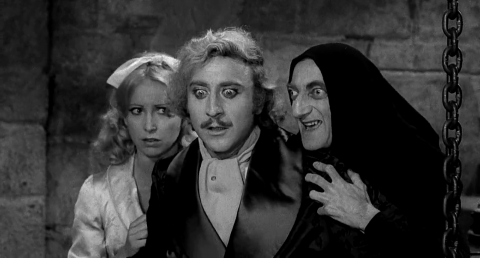.
Dr. D zapped Igor in the armpit with a quick 20,000 to blow off a little frustration. Then he went ahead and googled a very-carefully-thought-out phrase. “Do pitching teams win more?”
INSTANTLY he was buried in a mountain of old, crumpled Dixie cup articles proving, yes, of course pitching teams win more. Just chew on this, for instance: 3% of World Series winners had below-average pitching staffs. But 33% of them had below-average offenses. And we got a lotsa mo where that came from.
....
A prelude: Dr. D, and probably you, had ALWAYS argued that “the history of the World Series is written on the fabric of Cy Young starters.” But he had also read “studies,” eleventy-nine times bare minimum, claiming that Greg Maddux and Roger Clemens don’t win you anything beyond what their WAR indicate.
So the shame runs deep, in DOV Labs Inc., that we’d been talked out of our love for rotations like Cliff Lee, Roy Halladay and Cole Hamels. To say nothing of the Nationals’ last year. Or the Braves of the 1990’s. Poor Dr. D had given up even longing for rotations going Felix-Iwakuma-Greinke-Paxton.
....
EXHIBIT A (of A thru XZ)
Here is a 2011 Beyond the Box Score article that proves something that can’t possibly be true. :- ) Mojo, do we file this in the Konspiracy Korner subdomain or the Sabermetrics area?
The Konspiracy being: if you build around pitching and defense, you are (moderately) more likely to finish with a top-8 run differential. (How in the world could that be true? But it has been true.)
.
.
Not only that! But given that you have a +100 run differential to start with, you (of course) win more games, the lower-scoring your games are. If you score 900 and give up 800, you are scoring 1.12 runs for each run your opponent does. But if you score 600 and give up 500, you’re hauling in a massive 1.20 runs per enemy plate-ster. Compare a 112 OPS+ to a 120 OPS+. It's like two standard deviations' worth.
Whoop! Shoulda used ERA+ in that exampler.
.
EXHIBIT B
Hey, we're just gettin' loose. That was just talking about what pitching does in the reg season. Turns out this is way, WAY amplified in the postseason.
Here’s a 2011 Hardball Times article with a coy title: Pitching (Almost) Always Wins Championships. The exec sum would be,
- Only 3 of 106 champions have done it with an ERA+ of less than 100
- But! 33 of the 106 champions have sailed in with an OPS+ of <100
- Since the Big Red Machine, only 5 of 33 champions have been hitting teams
- The average champ (since 1900) had an OPS+ of 103 and an ERA+ of 114
For instance, the 2010 Giants had an offense of 95, a defense of 121, and were predicted by EVERYBODY to get wasted by the Phillies, if not the Braves. What it turns out, though, is that the Giants had an absolutely model 1900-2010 World Series winner. That is, they had Matt Cain, Tim Lincecum, Madison Bumgarner, and Jonathan Sanchez (3.05 ERA, 205 strikeouts). They won the World Series, 4-1.
The 2012 Giants won it in a clean sweep, 4-0. Granted, their offense was 106 and pitching 96 this time, but EXHIBIT B is talking about the postseason. The ’12 Giants had Bumgarner, they had Matt Cain whose postseason ERA is 2.10 lifetime, Lincecum whose life ERA is 2.40 in 13 games postseason, and Vogelsong was tough.
The 2014 Giants had, as even Dr. D recalls, the miracle stretch run from Madison Bumgarner with 53 IP and only 6 ER in October… including a shutout in the Wild Card game. (You think a Wild Card slot is a dice roll, think again. We got Felix.)
So, yeah. It’s nice to be wrong. Or right. Or whichever. If you like pitching, lean on back. Loosen your belt buckle a notch. It’s gonna be allll riiiggghhht.
Cheers,
Dr D

